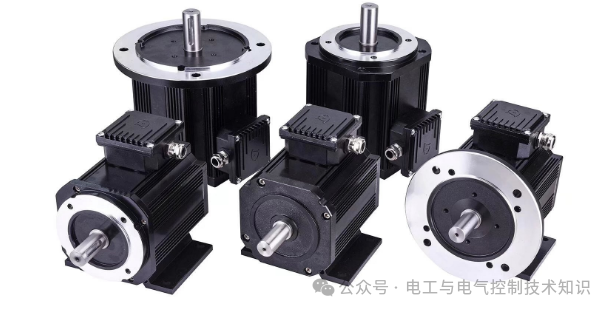What are the three methods of speed regulation for DC motors?
What are the three methods of speed regulation for DC motors? What are their advantages and disadvantages?
A DC motor is an electric motor powered by a DC power supply. Its working principle is based on the magnetic effect of current and the effect of the magnetic field on the current. When the DC power supply provides power to the motor through the brushes and commutator, a constant magnetic field is generated between the stator and rotor of the motor. This magnetic field interacts with the current on the rotor to generate torque, causing the motor to rotate.

Three speed control methods of DC motor
1. Voltage conversion speed regulation
2. Frequency conversion speed regulation
3. Chopper speed regulation
Variable speed control
working principle:
Variable voltage speed regulation is to adjust the speed of the motor by changing the voltage applied to the armature of the DC motor. Usually a DC power supply and a reactor or a thyristor circuit are used to adjust the voltage.
advantage:
Simple: The control circuit is relatively simple and easy to implement.
Lower cost: No complex control equipment is required.
Good thermal performance: When the motor runs at a lower voltage, the losses are lower and the thermal effect is less.
shortcoming:
Lower efficiency: The efficiency is lower at part load because there is a fixed voltage drop.
Torque ripple: In certain applications, torque ripple may occur.
Limited speed control range: The voltage variation range is limited, resulting in a limited speed control range.
Frequency
working principle:
Variable frequency speed regulation adjusts the speed of the motor by changing the frequency of the power supply to the DC motor. This is usually achieved by using a frequency converter, which converts fixed frequency AC power into variable frequency AC power, which is then converted into variable frequency DC power through a rectifier.
advantage:
High efficiency: High efficiency is maintained over the entire speed range.
Wide speed range: A wide speed adjustment range can be achieved.
Smooth speed regulation: Provides smooth and stepless speed regulation.
Good dynamic response: quick response to load changes.
shortcoming:
Higher cost: The inverter and its control circuit are more expensive.
Complexity: The control system is more complex than transformer speed regulation.
Possible electromagnetic interference: The inverter may generate electromagnetic interference.
Chopper speed regulation
working principle:
Chopper speed regulation controls the speed of the motor by adjusting the pulse width (PWM) of the DC power supply. The chopper switches the power on and off in each cycle to adjust the effective value of the armature voltage.
advantage:
High efficiency: low chopper losses and high efficiency over the entire speed regulation range.
Precise control: Very precise speed control can be achieved.
Good thermal performance: Due to high efficiency, the thermal effect is small.
Regenerative braking: Regenerative braking of the motor is easy to achieve.
shortcoming:
Cost and complexity: Choppers and their control circuitry can be expensive and complex.
Electromagnetic Interference: Chopper operation may generate electromagnetic interference.
Motor requirements: Some types of DC motors may not be suitable for chopper speed regulation.
in conclusion
There are advantages and disadvantages to each method of DC motor speed regulation. The method you choose depends on the specific application requirements, cost budget, efficiency requirements, speed range, and complexity of the control system. Transformer speed regulation is simple and low cost, but the efficiency and speed control range are limited. Variable frequency speed regulation provides a wide speed range and high efficiency, but the cost and control system complexity are high. Chopper speed regulation is efficient over the entire speed range and can accurately control the speed, but may require more complex control circuits and higher costs.



























 XINDA
XINDA